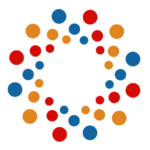COVID-19 Vaccine Equity Webinar: Global Challenges Due to Local Inequities in Vaccine Distribution

July 14, 2021
11:00 AM EST
When it became clear that a COVID-19 vaccine would become available, immediately, the global scientific and public health community became concerned about equity in vaccine distribution. This concern for equity expressed itself at different levels. In terms of countries, this concern was expressed through the World Health Organization’s (WHO’s) World Health Assembly, which approved the COVAX (COVID vaccine) Initiative on May 19, 2020 in the interests of declaring immunization against COVID-19 a “global public good” (von Bogdandy & Villarreal, 2020). The COVAX initiative was intended to get countries to work together to ensure that richer countries could help facilitate poorer countries getting access to the COVID vaccine, rather than hoarding the vaccine all for themselves.
Despite these great intentions, we have seen “vaccine nationalism” as governments themselves – in both rich and poor countries – struggled to get vaccine distributed to their own populations (Jean-Jacques & Bauchner, 2021; von Bogdandy & Villarreal, 2020). In the United States (US), people aged 65 and older were designated as a priority population for vaccination, but this was not equally applied, and older people in vulnerable populations did not see equity (Jean-Jacques & Bauchner, 2021).
What this shows is that even with the best of intentions, vaccine equity is not simple. Ensuring equity becomes more complex at a higher level. As of January 2021, 190 countries are participating in COVAX (Emanuel et al., 2021), and it would be unrealistic to downplay the struggles they must be having achieving vaccine equity within their own borders. How these local struggles impact a country’s ability to participate in larger efforts in global vaccine distribution equity is the topic of this webinar.
This webinar will include the following panelists representing the following issues:

